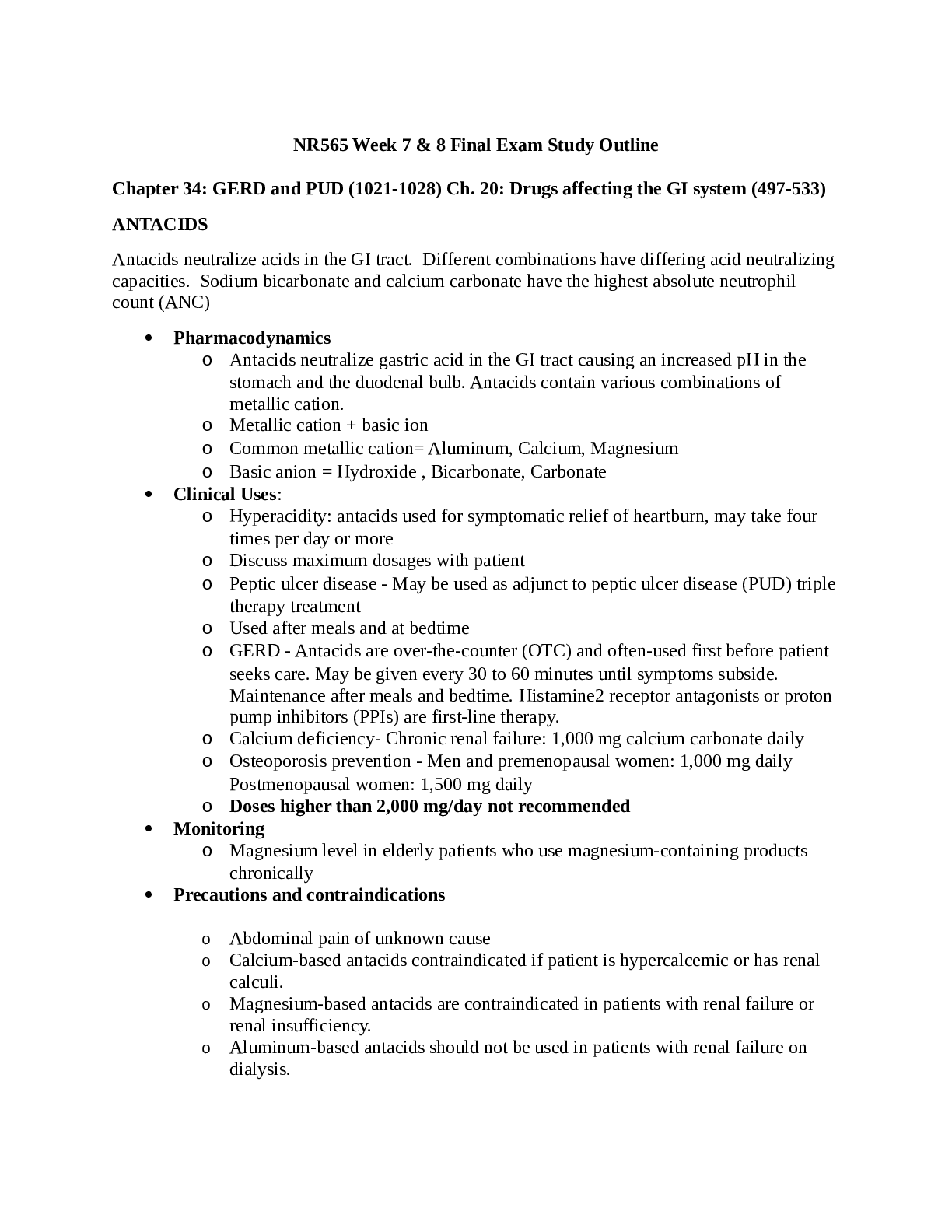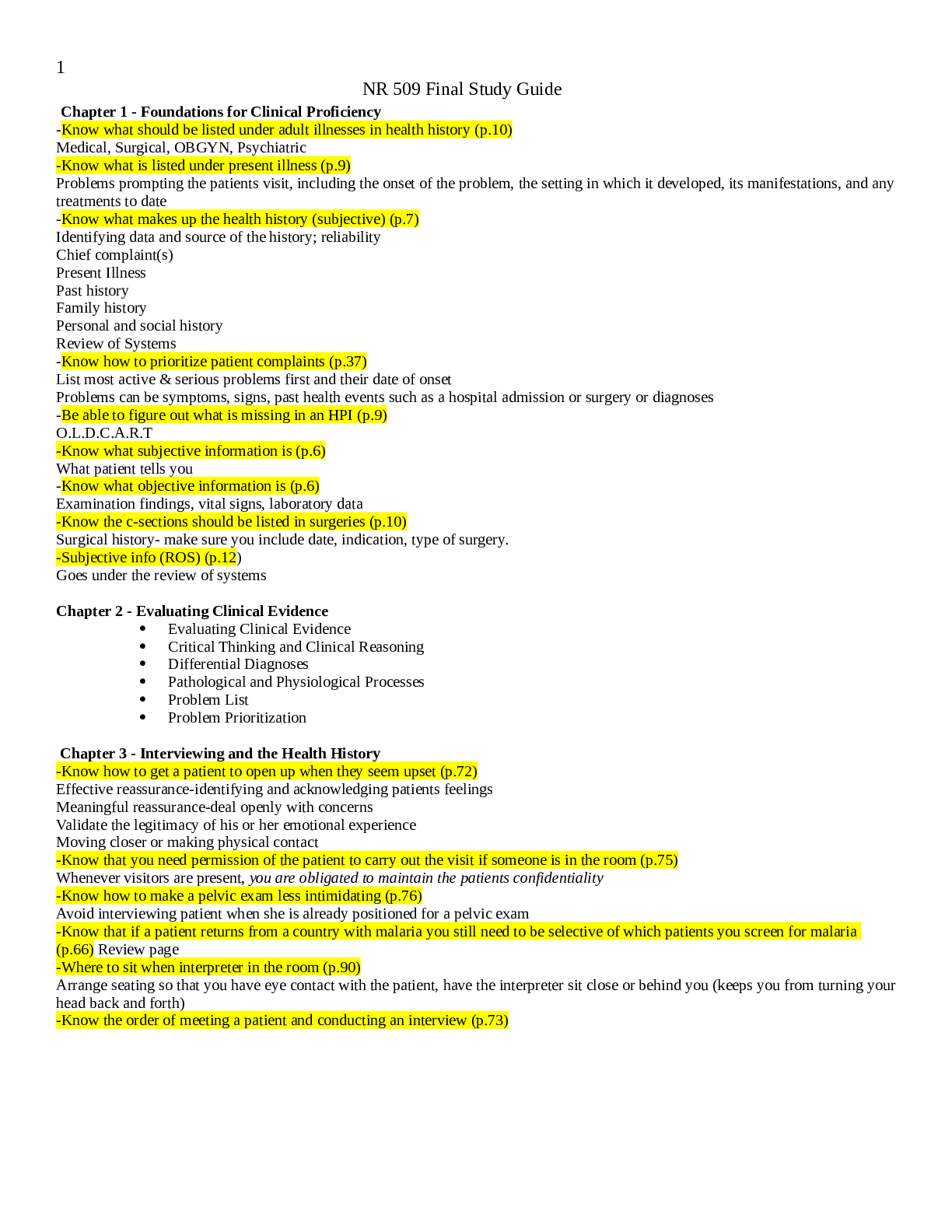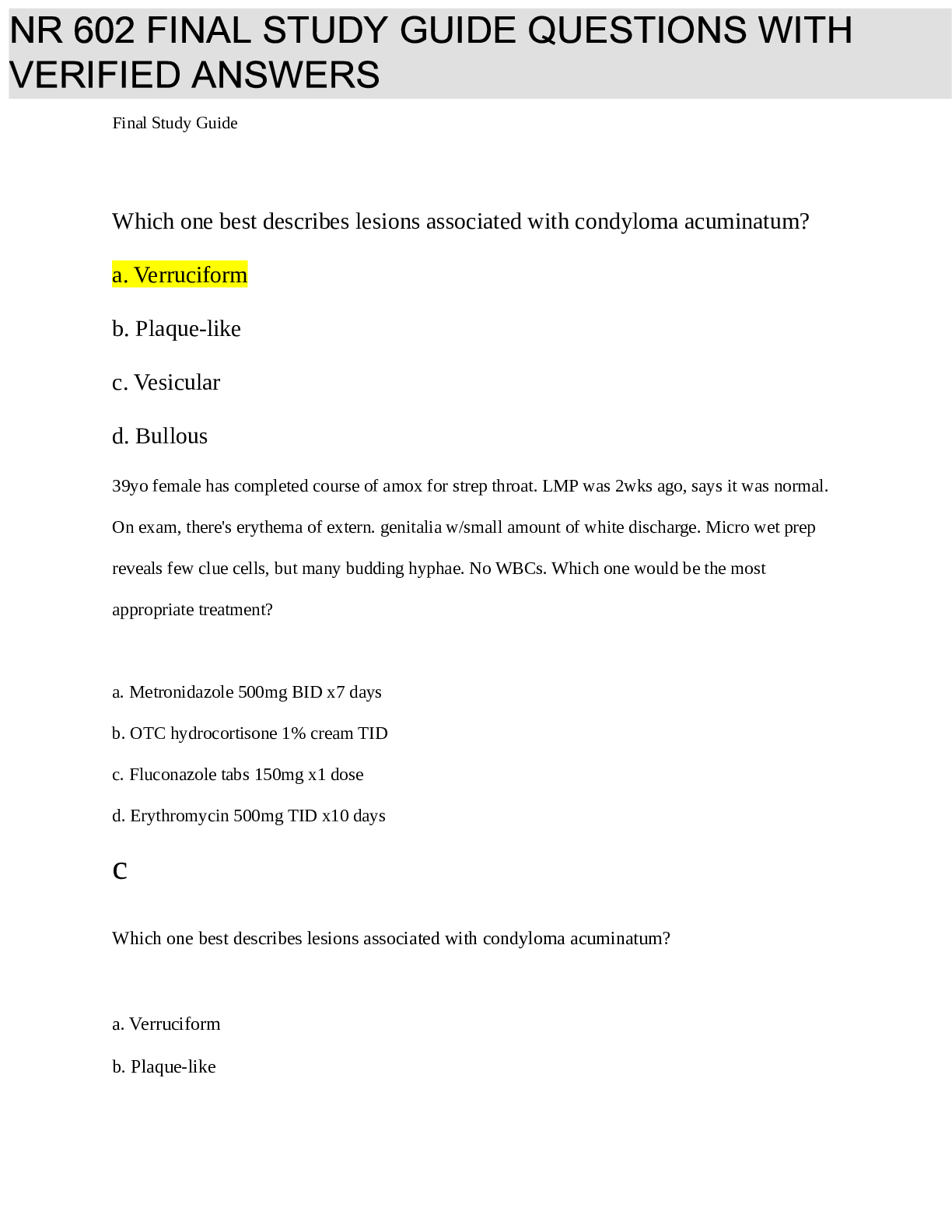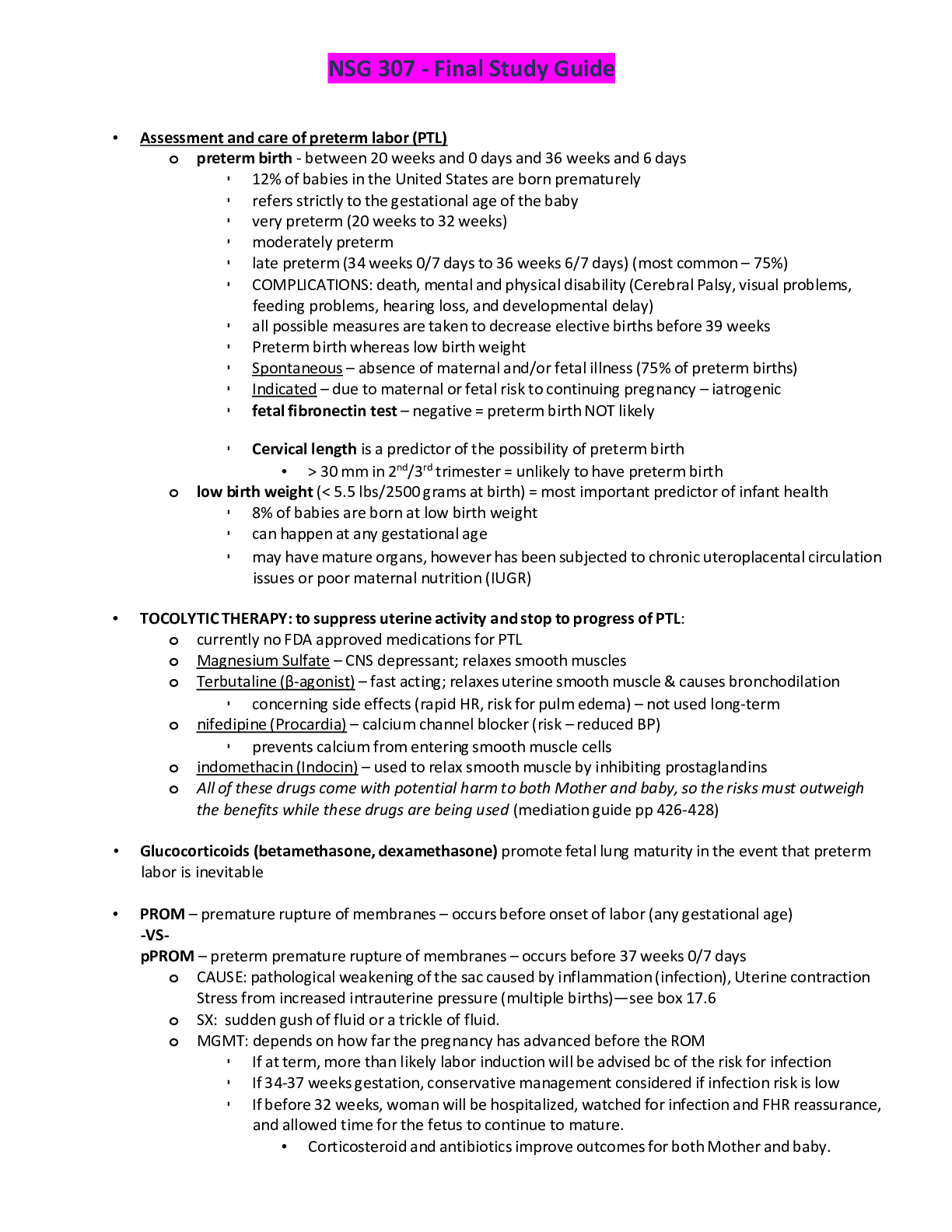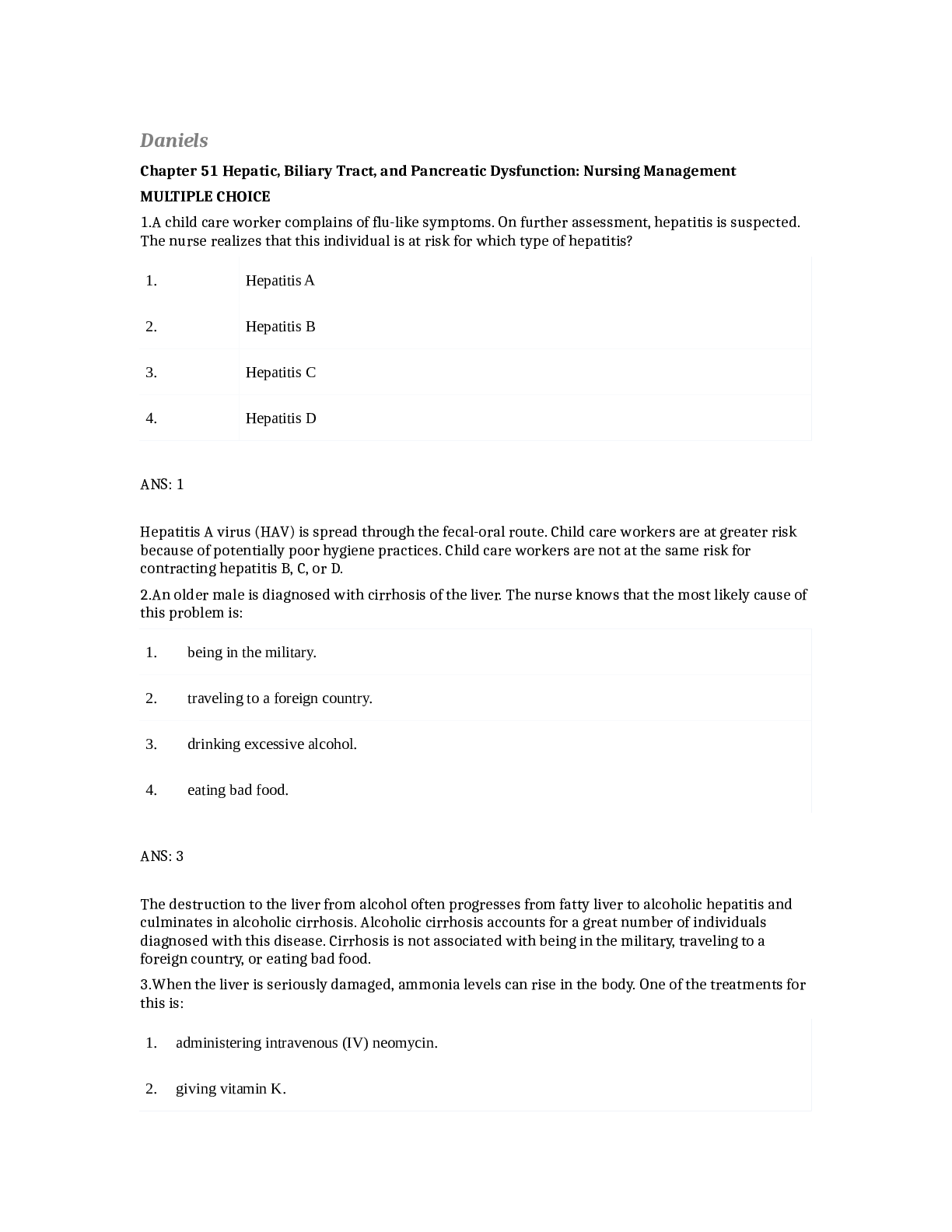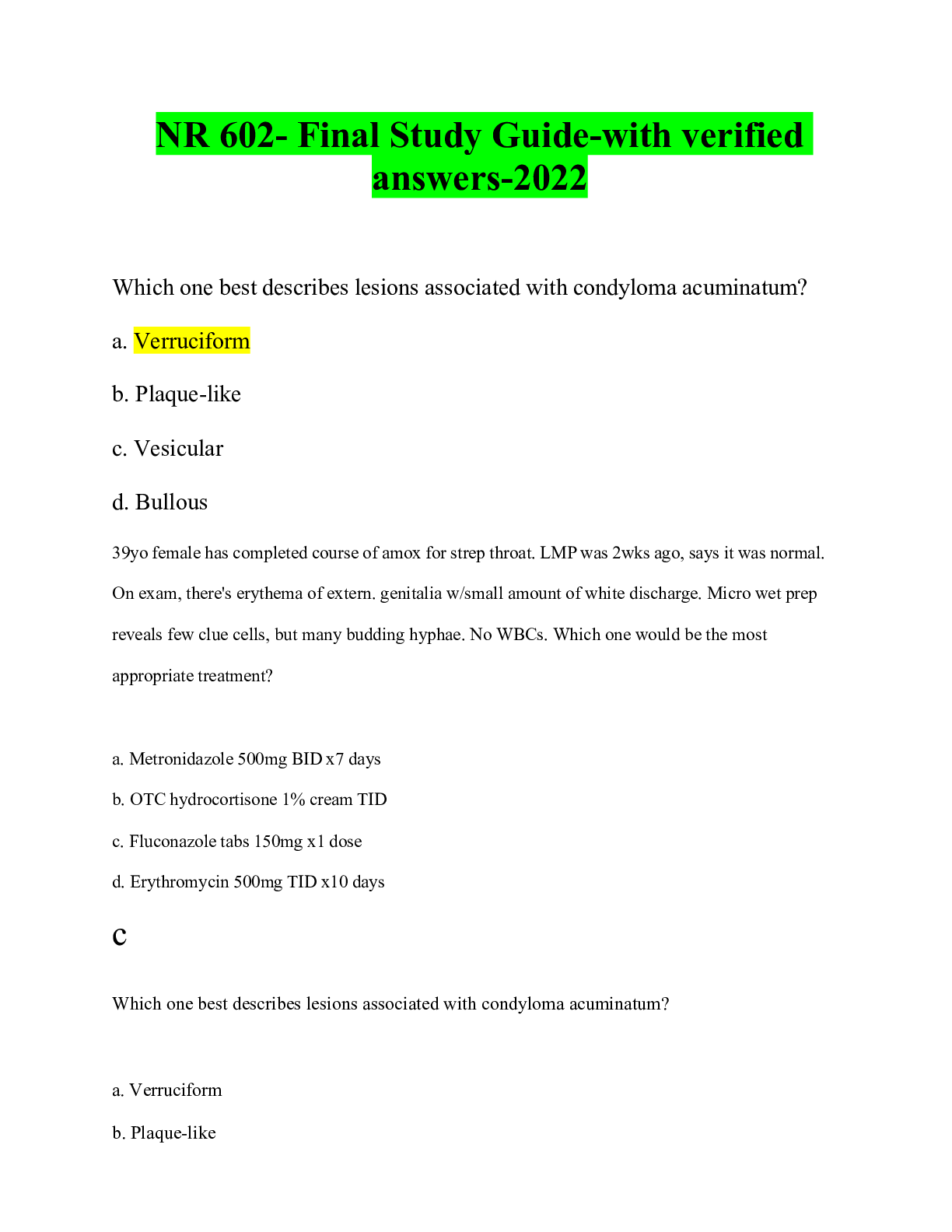*NURSING > STUDY GUIDE > NR 228 - Final Study Guide. Complete Solutions. (All)
NR 228 - Final Study Guide. Complete Solutions.
Document Content and Description Below
NR 228 - Final Study Guide. Complete Solutions. 1. Nutritive content of sugar sub vs. sugar sweeteners (honey) ● Multiply the number of grams of sugars by 4 kcal. By dividing this number by the ... total kcal per serving and multiplying the decimal by 100, you can determine the percentage of sugar content. ● Sugar substitute is a food additive that provides a sweet taste like that of a sugar while containing significantly less food energy. One packet of sugar substitute is equal to 1 dessertspoon (2 teaspoons). ● Sugar sweeteners are found in ice cream, chewing gum, candy, honey. It’s loosely considered any sweetener that you use instead of regular table sugar (sucrose). Content for sugar sweeteners is 0g which is 1 tsp. 2. Feeding patients with dysphagia (NG vs TPN vs soft/mechanical) ● Dysphagia Diets begin with the most restrictive diet (pureed, often with thinned or thickened liquids) and progress back to a general diet if dysphagia improves (Heiss, et al, 2010). Level 1 is the Dysphagia Pureed diet; no coarse textures are allowed and foods are totally blended without lumps. Liquids are ordered separately, usually at pudding consistency. Level 2 is Dysphagia Mechanically Altered; foods are to be moist, softened, and easily chewed. Meats are ground and served with a gravy or sauce, or soft salads may be used (tuna or chicken salad, for example). Level 3 is Dysphagia Advanced; hard, dry, sticky and crunchy foods are omitted. Level 4 is a return to the general diet. Nurses should check with their institution's diet manual for the list of specific foods that may be served for each level of the dysphagia progression. ● Soft diets are often used during transition from liquid diets to regular or general diets. Whole foods, low in fiber and only lightly seasoned, are used. Food supplements or between-meals snacks may be used if needed to add kcal. Soft diets can contain “hard to chew” foods such as white toast. This diet is not appropriate for patients requiring mechanically altered diets. ● Total parenteral nutrition (TPN) may be necessary if nutritional needs cannot be met enterally (feeding by mouth and/or with tube feeding). When oral intake is initiated, early satiety and altered tastes may prevent adequate intake. In such cases, between-meal feedings or supplements should be used to meet calorie and protein goals. Fluid losses from drains, nasogastric tubes, stool output, and urine should be considered in the determination of postoperative fluid needs. 3. Pg.235, BMI BMI (kg/m 2 ) Underweight <18.5 Normal 18.5-24.9 Overweight 25.0-29.9 Obesity ≥30 4. What kinds of foods do you want on a low cholesterol diet? ● Soluble fiber from certain foods, such as whole oats and psyllium seed husk, as part of a diet low in saturated fat and cholesterol and a reduced risk of heart disease (Whole wheat pasta/oatmeal/Quinoa) ● Examples she threw in class: Beef (77 mg), milk (24 mg), eggs (187 mg), raw beans (0 mg)? [Show More]
Last updated: 2 years ago
Preview 1 out of 13 pages
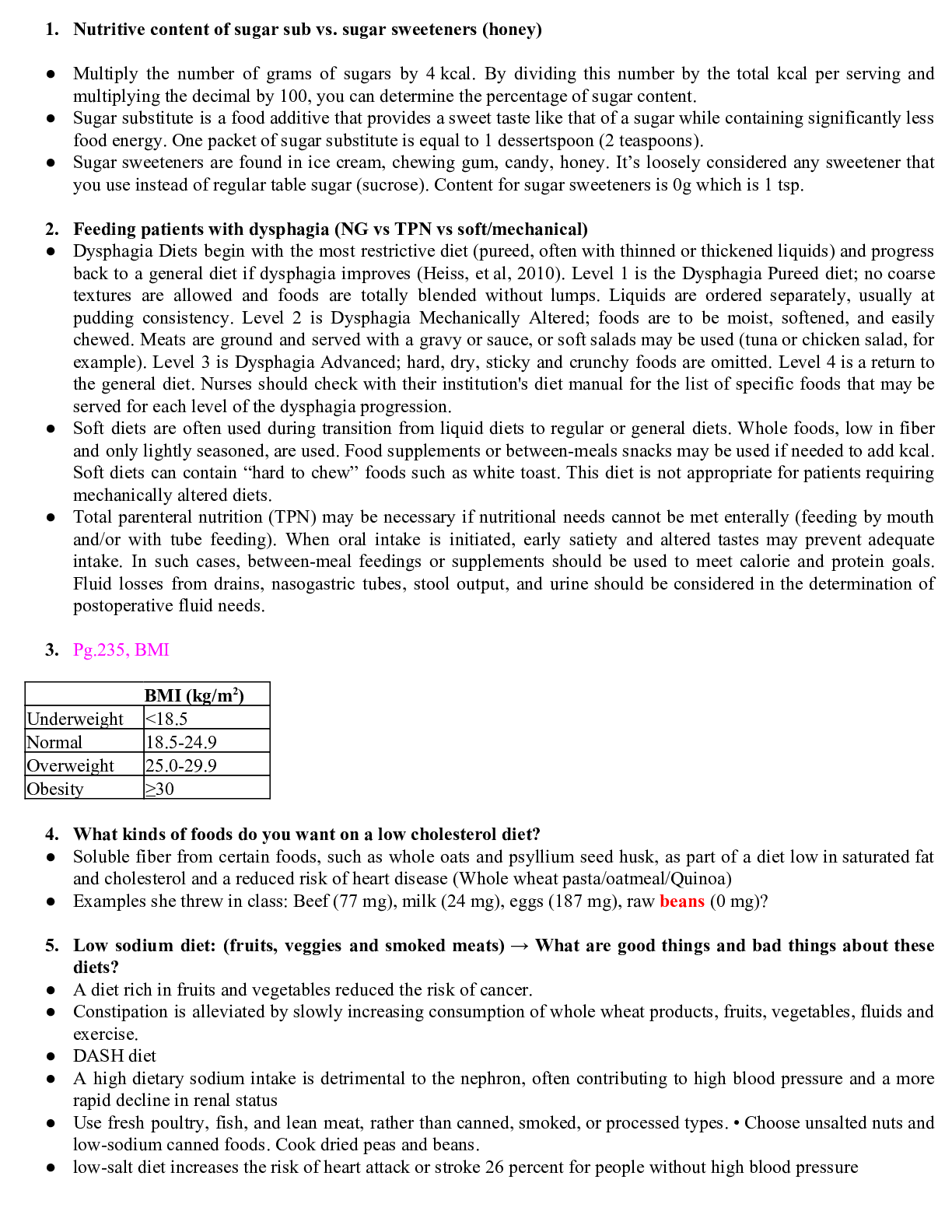
Buy this document to get the full access instantly
Instant Download Access after purchase
Buy NowInstant download
We Accept:

Reviews( 0 )
$5.00
Can't find what you want? Try our AI powered Search
Document information
Connected school, study & course
About the document
Uploaded On
Aug 25, 2021
Number of pages
13
Written in
Additional information
This document has been written for:
Uploaded
Aug 25, 2021
Downloads
0
Views
137


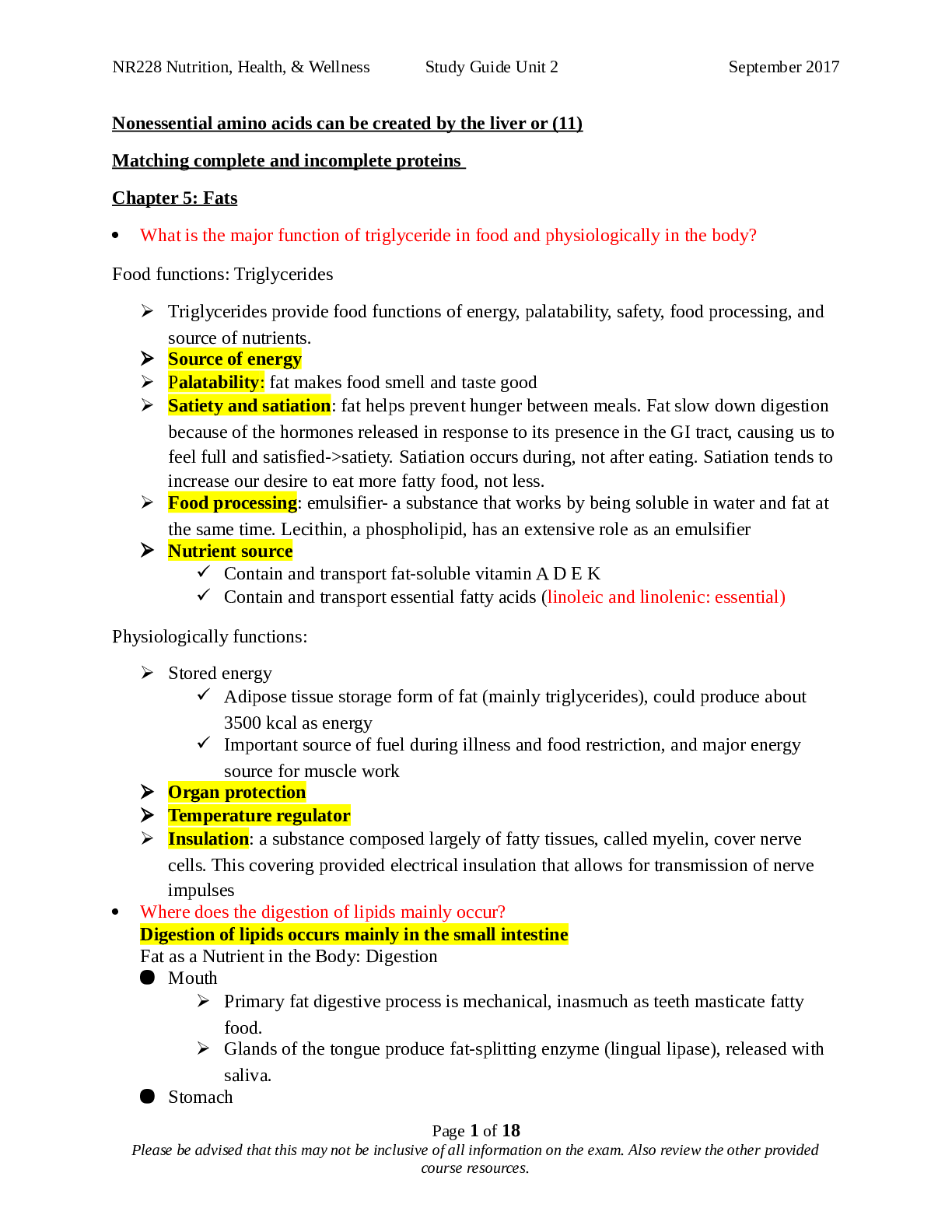
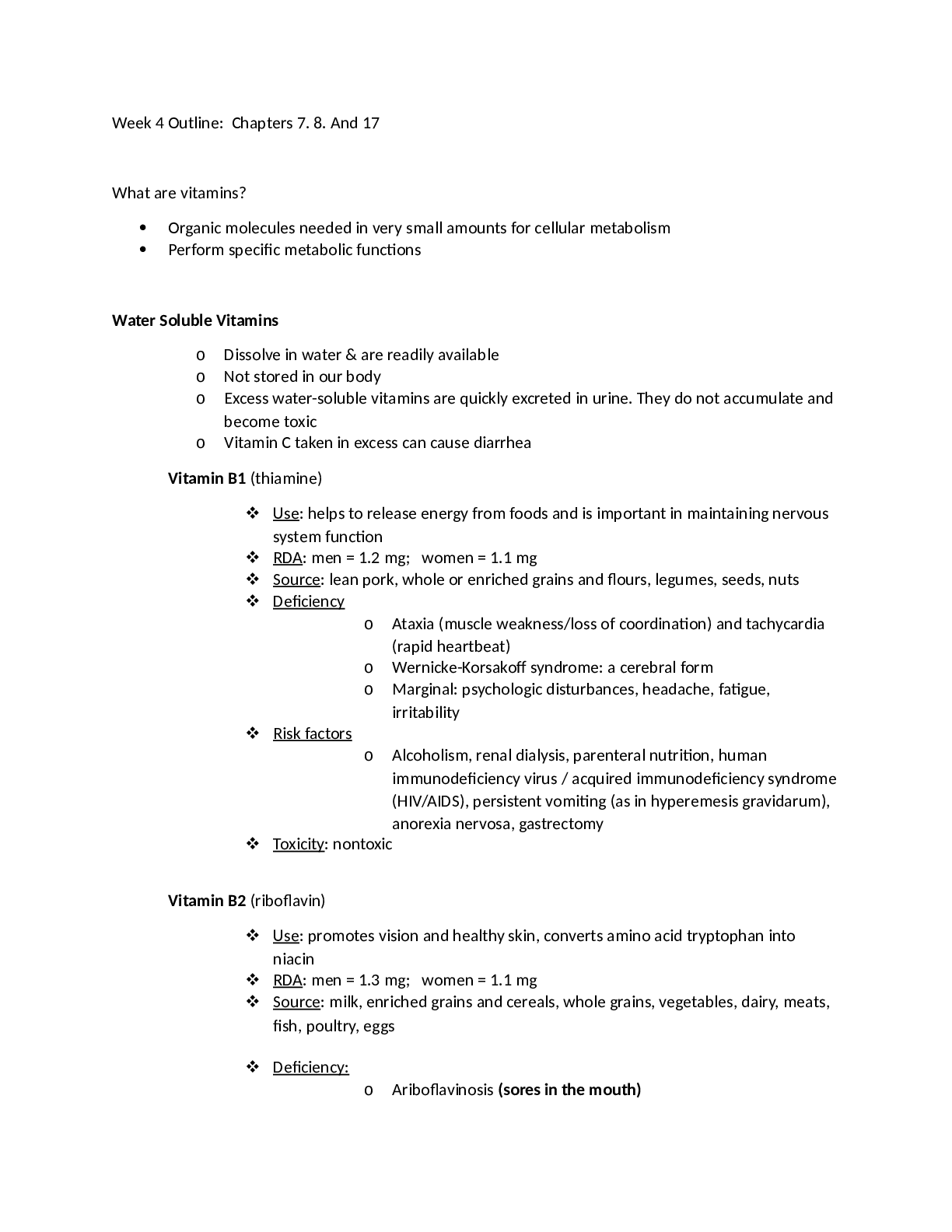

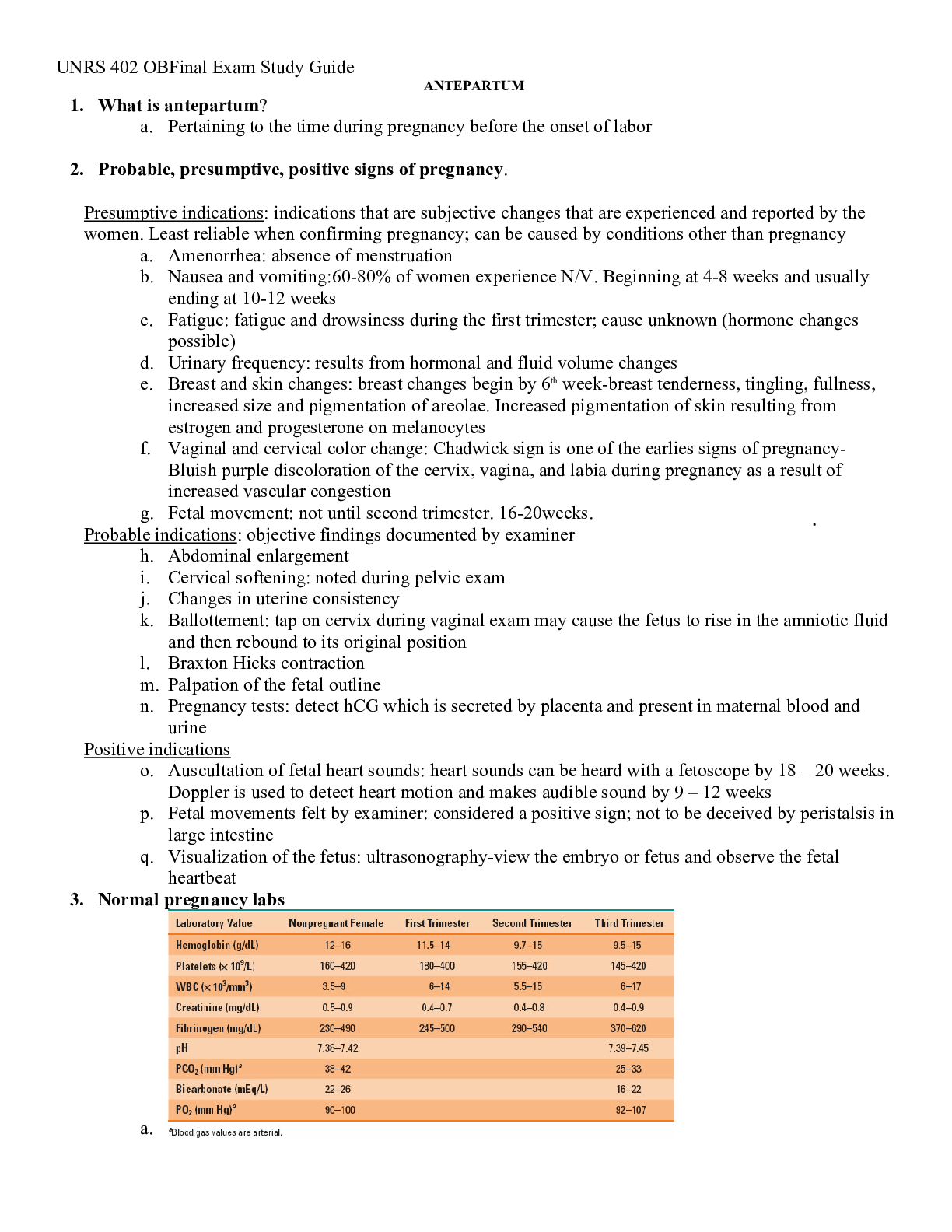

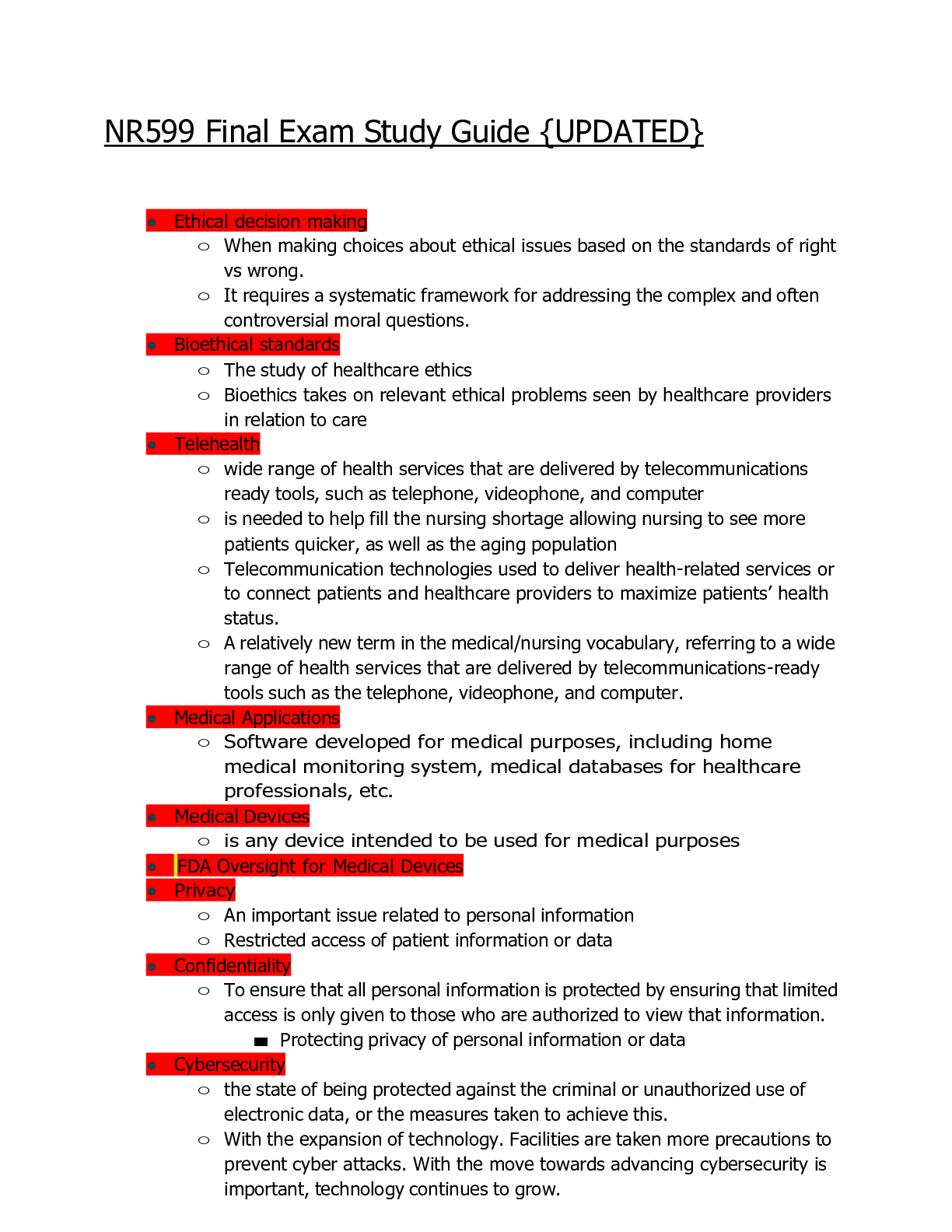
.png)
.png)
.png)
